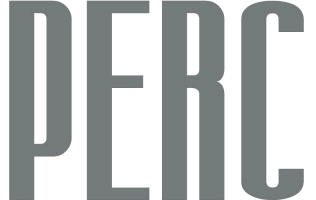PERC’s history
Our History
Following a series of mergers of professional institutions, the Reserves Committee established by the Institution of Mining and Metallurgy in the UK, to set standards for reporting mineral exploration results, mineral resources and reserves has been re-constituted with a broader remit, as the Pan-European Reserves and Resources Reporting Committee (PERC). PERC has been formalised as a not-for-profit organisation based in Brussels, at the offices of the European Federation of Geologists (EFG).
1991 - First European reporting standard
The first reporting standard in Europe was produced by the IMM Reserves Committee in 1991, modelled largely on the new JORC Code in Australia. It also appeared in a slightly modified form in the London Stock Exchange Listing Rules (Chapter 19 – Mineral Companies). During the 1990s there were also reporting standards defined in other regions of the world. The increasing globalisation of the mining industry, and mining finance in particular, led to an initiative to harmonise the various reporting standards. This was done under the umbrella of the former CMMI (Council of Mining and Metallurgical Institutes).
1994 - CRIRSCO established
CRIRSCO, was formed in 1994 under the auspices of CMMI, to represent organisations responsible for developing mineral reporting codes and guidelines in Australasia (JORC), Canada (CIM), Europe (National Committee, now PERC) South Africa (SAMREC) and the USA (SME). At the time, the combined value of mining companies listed on the stock exchanges of these countries accounted for more than 80% of the listed capital of the mining industry.
The international initiative to standardise market-related reporting definitions for mineral resources and mineral reserves had its start at the 15th CMMI Congress at Sun City, South Africa in 1994. The mineral definitions working group (later called CRIRSCO) was formed after a meeting at that Congress, and was made up of representatives from the countries listed above, with the primary objective of developing a set of international standard definitions for the reporting of mineral resources and mineral reserves.
1997 - Denver Accord
In 1997, at a meeting in Denver, agreement was reached on the definitions of the two major categories, Mineral Resources and Mineral Reserves, and their respective sub-categories Measured, Indicated and Inferred Mineral Resources, and Proved and Probable Mineral Reserves.
2001 - Publication of 'The European Reporting Code'
In 2001, the first new standard based on the Denver Accord, entitled ‘The [European] Reporting Code‘ was published. Titled in full “The Code for Reporting of Mineral Resources and Mineral Reserves”, it set out minimum standards, recommendations and guidelines for Public Reporting of Mineral Exploration Results, Mineral Resources and Mineral Reserves in the United Kingdom, Ireland and Europe. The Code was drafted by a Working Group established in 1999 by the former Institution of Mining and Metallurgy (IMM), now the Institute of Materials, Minerals and Mining (IMMM) and later (2000) joined by the European Federation of Geologists (EFG), the Geological Society of London (GSL) and the Institute of Geologists of Ireland (IGI).
2006 - Establishment of PERC
Evolution of international reporting standards, encapsulated in the CRIRSCO Template (2006), highlighted the need to up-date the European Reporting Code. This task was undertaken by a re-constituted committee with a Europe-wide remit: The Pan-European Reserves and Resources Reporting Committee (PERC).
2008 - Publication of 'The PERC Reporting Code'
On 17 December 2008, the Pan-European Code For Reporting Of Exploration Results, Mineral Resources And Reserves (“The PERC Reporting Code”) was published. This incorporated not only the new ‘consensus’ standards of the CRIRSCO Template but also some of the most useful features of other CRIRSCO-aligned standards, such as the version of Table 1 included in SAMREC.
2011 - Publication of a Russian national reporting standard
From late 2006 PERC established a very fruitful relationship with Russian organisations, including the professional geologists association within the National Association for Subsoil Examination (NAEN), and assisted them in the development of a CRIRSCO-aligned Russian national reporting standard. The NAEN Code was published in 2011 and NAEN joined CRIRSCO at the same time.
2012 - CRIRSCO agreement on a set of common standard definitions
CRIRSCO has continued to introduce improvements and modifications, agreed in successive annual meetings, and in 2011-2012 a set of common standard definitions was agreed, allowing all CRIRSCO members to use identical wording for the set of key definitions, not only of resources and reserves, but also for public reports, competence criteria, and technical studies.
2013 - Registration of PERC as a Brussels based NGO
PERC itself operated as an informally constituted group from 2006 to 2011, but it was recognised that continuing development of its European role required some formalisation. From 2011 to 2013 a core ‘acting committee’ developed the new structure, giving PERC a legal identity, with formal relationship between PERC and its parent organisations. A strategic decision was made that PERC should be registered in Brussels, at the office of one of its parent organisations, the European Federation of Geologists.
From 2013 PERC has held annual meetings around Europe:
| 2013 | London, UK |
| 2014 | Dublin, Ireland |
| 2015 | Helsinki, Finland |
| 2016 | Carrara, Italy |
| 2017 | Heidelberg, Germany |
| 2018 | Bardon Hill, UK |
| 2019 | Madrid, Spain |
| 2020 | virtual on-line meeting |
| 2021 | virtual on-line meeting |
| 2022 | Stockholm, Sweden (hybrid) |
| 2023 | Brussels, Belgium (hybrid) |
Contact Us
Follow Us
Pan European Reserves & Resources Reporting Committee
EFG Office
c/o Service Géologique de Belgique
13, Rue Jenner B-1000 Bruxelles
Belgium



